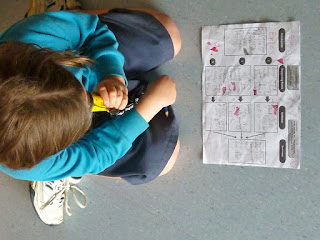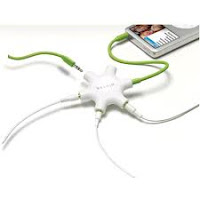Part of good management of students and the creation of 'self-managing' students
is the time it takes for them to become self managing and what management strategies, you...the teacher, have put in place.
As an issue arises then create a management strategy to take care of that problem. One came up yesterday, this school does not allow students to print from their computers, only the teacher laptop can print! Some of the children have publishing to print, others need to print out their drafts for conferencing and further editing. The teacher could end up being harassed by impatient students all day wanting their printing!
Solution: We will add a 'Ready to Print' option to the Writing management board. Students move their name labels to that part of the board. The teacher will find the saved file in the student's individual folders and can print all files at at time that is convenient.
We wanted all of the children to have some typing practice, so instead of handwriting sessions everyday, nine children would be allowed to go to the computers to practice their typing and do their spelling activities. The rest of the class would do their handwriting and spelling. We made a timetable that would run for the whole week. This will go on the wall so all students know when it is their turn to be on the computer during this time.

We used the 'easi speak' for a different purpose today. One of the students has a problem with writing things down, computers are difficult and so was the iPad. The main difficulty appears to be with spelling and writing/typing fluently. This child has very good verbal skills. She managed to write down her ideas and after she conferenced her work with the teacher rather then get her to go through the pressure of writing or typing again we got her to publish with the 'easi speak'. She did a perfect job in one 'take'. She was also the first person to publish in the class and had the biggest smile on her face when she was informed of this.
The 'easi speak' continues to be one of the most popular choices for reading. Students love using the microphone to record their voices speaking and even more so...hearing themselves back through the speakers.
The teacher will need to set up a timetable for this activity as some children were complaining that they haven't had a turn yet. Small whiteboards are great for 'booking' time and equipment and students are more likely to use them mainly for the novelty of using whiteboard markers!
Mobile Listening Post
I brought in an old iPod of mine that has audiobooks loaded on it. I have a few copies of
Stormbreaker so I set that up as an reading option for students. Several students enjoyed listening to the story and reading the book at the same time. To manage this well, if there are students listening at different times then they will need to make a note of the time where the story is up to.
This is a great followup activity for students particularly if the group are reading the book as part of their instructional reading.
Teachers can make their own audiobooks of student basal readers, record them on GarageBand (Mac) or Audacity, then download to an iPod or MP3 player. Use a splitter so up to 5 headsets can listen at one time.
Another popular reading activity is 'Grab some friends and perform a play. The students also have to record what they are doing with a 'Flip Video' Camera (these are not in production anymore, so if you can find one, grab it as it has so many uses in the classroom). The benefits of students recording is
- it keeps all students on task
- the play can be watched at any time by anybody
- the performers can 'critique' their performance
In this photo is an interesting group with one girl and several boys with strong characters. From the beginning you could see that there were going to be 'co-operation' issues. From several observations I feel that the use of the camera kept them more on task then they normally would be, as they wanted to have a movie to show the rest of the class so got over their 'leadership' problems quickly.
CollaborationEven though these students are working 1-1 on these computers, they are still talking to each other, they are asking questions, providing answers and helping each other.
They are on swivel chairs that helps with the collaboration, they can move and turn to each other. When this photo was taken, the boy on the end had a problem and the two girls to his right were helping him.






































